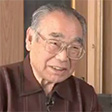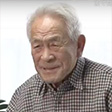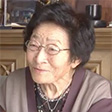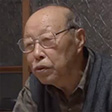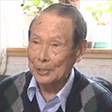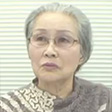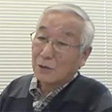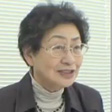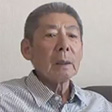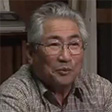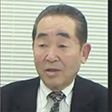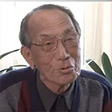Historical testimonies: The Northern Territories described by former islanders
Historical testimonies: The Northern Territories described by former islanders
How did the former islanders live in each era? In chronological order, here are some excerpts from the “Northern Territories described by former islanders: memories and historical testimonies”and “Storytellers from the Northern Territories.(Video Gallery) ”
※Note: These testimonies are excerpts of records from 1995 and 2012. Click the name for the full version.
-
Island life before the war
- 1875
The Treaty for the Exchange of Sakhalin for the Kurile Islands is signed. -
Around 1905, my grandfather settled on the Pacific side of Shikotan Island and lived on fishing. Life was very stable and close to self-sufficiency. He produced nori, ginnanso and kelp seaweeds, as well as salmon, trout and cod on his own and sold products made from these.
There was no electricity, so carbide lamps were used. There were no doctors. I'm the second of six brothers born on the island. There being no midwife, an experienced old woman helped to deliver us. The locals got along with each other and shared what they had.1905
The Treaty of Portsmouth is signed.The Meiji and Taisho erasI went to the third-largest elementary school on Kunashiri Island. The number of students increased rapidly around May, because couples came to work with their children, and about 20 to 30 people moved in every season. I learned a little English in middle school. I also played baseball. When we hit a rubber ball, it would fly toward the sea, and if it fell in, it was a home run. The first greeting we exchanged was "Have you eaten?" The bonds in the settlement were similar to those of a family.
Ms. Saki Sumida
Suisho Island, Habomai Islands
Suisho Island, where I was born and raised, was surrounded on all sides by ice in winter, but Amur adonis and yukiwarikozakura bloomed in early spring, golden daylilie swayed in the breeze in summer, and white lilies-of-the-valley and watasuge adorned meadows. It was a picturesque paradise where irises created a purple carpet, and crimson Japanese roses bore fruit on white dunes.
Mr. Ryozo Sato
Etorofu Island
The 45 parallel runs roughly through the center of Etorofu Island, my home, and it delineated different climates on the island. Broadly speaking, the north was covered with plants from Kamchatka, such as white birch, Japanese Alder and Siberian dwarf pine, and the south was covered with forests of northern Japanese plants, such as Yezo spruce and Sakhalin fir, under which matsutake mushrooms with a distinctive aroma were collected for shipping to Aomori and Hakodate.
Lake Urumombetsu was home to the largest red salmon hatchery in the East. It was a stately reinforced concrete building with a frontage of 13 m and a depth of 45 m. In Utasutsu Bay, large schools of tuna migrated from September through October every year, and there are records of about 300 large tuna weighing 80 to 150 kg being caught during the peak fishing season. - Early Showa eraSeptember 1939: The Second World War breaks out.
-
After the war
- April 1941: The Neutrality Pact between the Soviet Union and Japan is concluded.
- August 9, 1945: The Soviet Union abrogates the Neutrality Pact between the Soviet Union and Japan and joins the war against Japan.
My father said in the middle of the night, “Looks like trouble. Japan has lost.” There were many Japanese soldiers in the neighborhood, and some were staying at our warehouse, so he may have heard this from them. I cried aloud with my sisters. I said “We could've fought to the end and died.” Eventually, all the Japanese soldiers ended up gone, having been taken to the Soviet Union.
August 14, 1945: Japan accepts the Potsdam Declaration.
August 15, 1945: The war ends.August 18: Soviet troops launch an attack on the Kurile Islands.When the war ended, no one on the island had a radio. There was only one radio at the island's police substation. We listened to the radio and learned that the war was over, that Japan had lost. Some cried. I sure did. We worried about what would happen to us.
I was in the Navy working as an aircraftman in the naval air fleet until the end of the war. [When I demobilized and returned to Nemuro] I found that the houses had been burnt, and there was nothing. I was surprised to learn that everything had been destroyed in air raids. I was told I couldn’t go back to the island, but I went to the Kunashiri fishery cooperative office in Nemuro every day to find a way to get back. I arranged passage on a ship and decided to go back to the island. But the situation gradually worsened, and my family on the island sent me a letter: “We're not a fishing family, so we have no boat. We won't leave. We don't know how many years it will take for us to be together again, but you shouldn't come. If you come, you’ll be captured, because you're a solder.” So I gave up on returning to the island.
-
Soviet invasion
-
Ms. Sakiko Suzuki
Etorofu Island
On August 28, 1945, when the war was over and peaceful island life was returning, Soviet troops suddenly invaded and occupied Etorofu Island.
A few days later, I saw Soviet soldiers for the first time. They came into my house with their shoes on, holding their shining black guns in one hand. They looted wristwatches, fountain pens and the like. When the head of one family was absent, the Soviet soldiers spent more than an hour rummaging through the house, and the wife was so scared that she prepared for death, dressing her four children in their best clothes. Tyrannical acts by Soviet soldiers were a daily occurrence. Saying that if the situation continued, we couldn’t live, the village representative asked the Soviet army to ensure the security of the Japanese islanders. As a result, the number of such incidents reduced.August 28, 1945: Soviet troops begin their occupation of the four northern islands. (August 28: They land on Etorofu Island.)August 31: Soviet troops completely occupy Uruppu Island.(September 1: They land on Kunashiri and Shikotan islands.)
(September 3: They land on the Habomai Islands.)September 5: Soviet troops complete their occupation of the four islands.Ms. Toshi Suzuki
Shikotan Island
Hearing that Soviet soldiers were looking for girls, my father fashioned a room behind the futon room to hide us, his four daughters, and we hid there whenever the Soviet soldiers came. We'd created a large shelter in the mountains in preparation for air raids, and we'd stocked it with rations and other food. But Soviet soldiers found the shelter, ransacked it, and confiscated those items. A Soviet solder used his bayonet to pierce a can of condensed milk for infants, which was very valuable at the time, drank about half, and threw the rest away. All I could do was watch him from behind without protesting.
Russians came into our house with their shoes on. One incident mortifies me more than any other, and I still regret it. When I was a child, raising a national flag on flag holidays was my duty. I kept the flag ball and the flag in a drawer neatly. A Russian opened the drawer and split the Japanese flag in two. I made a forward move, because it was the most important thing to me, but my mother clutched my hand. In hindsight, if I'd moved forward and grabbed his hand, I would've been shot and killed with a pistol.
Ms. Tomiko Wakamatsu
Shibotsu Island, Habomai Islands
It was when we were eating our meager evening meal. The accountant of our neighbors (the Nishimuras) visited us and said, “I can't live in a Soviet country. I want to escape to Nemuro. Could you pilot the ship?” My father, who was at a loss for how to take care of all the women and children, accepted the request immediately. My father had been a boatman before crossing over to the island, and he prided himself on being able to navigate the Nemuro Strait with his eyes closed. At first, it was planned to be an escape with only relatives and neighbors. But no one on the island could sleep even at night, and everyone seemed to be listening in on their neighbors. Our plan to escape spread like wildfire, and the boat quickly filled up. I think we arrived at Nemuro around noon the next day. Lots of reporters came to cover the incident, because we were the first group to escape.
Mr. Fumiko Kasai
Yuri Island, Habomai Islands
My parents saw a chance for their daughter to escape alone to Nemuro, so they figured they had to take it. Early in the morning of September 8, 1945, they asked a nearby kelp boat for help, and my friend, the captain, and I made our escape. On the morning of that day, the sun was beautiful and the waves were calm. I was terrified of the four-day boat trip. I cried thinking of the parents, brothers, and hometown on Yuri Island that I'd left. I remember Zeikomae Cape and Koike Beach looking blurry from tears.
- December 1, 1945: The mayor of Nemuro submits a petition to the Allies for the return of the Northern Territories.
-
Life under occupation
- February 2, 1946: The Soviet Union incorporates the four islands into its territory.
-
Mr. Atsuro Sasaki
Kunashiri Island
I think Soviet civilians came in around March 1946. They seemed to be pioneers, and about 200 people began living on the island. Most of the Soviet people felled trees, labored at lumber mills, and worked as fishermen, trying to mimic what Japanese people did. They said they wanted to get along with us. The Soviet people worked separately from the Japanese, and for every meal, they had Japanese rice and dishes seasoned with miso and soy sauce.
1946 –1947: Japanese and Soviet civilians live on the four islands under the occupation of the Soviet army. -
When Russian civilians came as a result of the occupation policy, it caused a housing shortage, because the island had buildings for only a thousand people at most. Naturally, Japanese people were forced to live in half their houses, and inevitably, Japanese were driven away.
July 1947: The Hokkaido Assembly makes a resolution on a petition for the return of Habomai, Etorofu and Kunashiri to Japanese control.Ms. Kazuko Hamada
Kunashiri Island
Soviet civilians began living on the island, and Russian women and children were seen. At that time, there was a sewing machine in my home, so my sister was asked to sew pants and officers’ caps for Soviet soldiers, and she struggled to make them. I was also asked by married women to make dresses from Japanese kimonos. The soldiers rewarded us with soap and sugar, which were very valuable at the time.
Ms. Sakiko Suzuki
Etorofu Island
The Soviets generally looked like cheerful people who liked dancing and singing, but as the days wore on, we found them silently taking things from places where Japanese couldn’t keep an eye on them. If they saw something they wanted, they'd pester us until we let them have it. The villagers had to remain alert.
One day, saying there was no oven for bread, Soviet people broke a Japanese cremation furnace and removed the bricks to make an oven. We Japanese were furious, but we couldn’t live without the bread baked in that oven.My house was divided in half, and one or two families moved into the back part. A lady called “Madam” lived there and visited us during the day to teach my mother how to bake bread. In the beginning, everyone feared them, calling them "Russkies," but I guess we all got along.
Ms. Hatsu Kawada
Taraku Island, Habomai Islands
The Soviet troops were stationed in the Furubetsu area at the center of the island, and they occupied all public facilities, such as radio stations, schools and temples. The Japanese soldiers we'd relied on seemed to have been carried off to Siberia.
Schools and other public facilities occupied by Soviet troops were completely devastated. At a temple, the remains of hundreds of bodies were found scattered, which was a horrific sight. My husband negotiated to organize the remains and finally got permission on September 4, 1947. The next day, my husband and father-in-law dug a big hole on the temple grounds, put the remains in a new shitodaru (72-liter barrel) and two apple boxes, and buried them together with the remains of 186 bodies in bone boxes. -
Repatriation from the islands
-
On August 30, 1947, everyone shouted that the repatriation order had come. I thought I was saved. We didn't know what might happen, and we were afraid that if we did anything we'd be taken away. I was relieved that my life was saved by the repatriation order.
It was hard to get out of Shibetoro. One of the pet dogs left on the island followed the ship into the sea. Then the other dogs followed their owners. When the navigator who was piloting the ship couldn't stand it and picked up speed, someone started crying hard, and everyone who'd been stifling their sorrow until then also started crying. I also felt regret and cried. The sound of the ship's motor and the voices of everyone crying echoed from the cliffs of Tokkari Moezaki, creating an awkward atmosphere. It was with those feelings that I left the island. At that time, I felt painfully aware of being a citizen of a defeated nation.”1947 – 1949: People are repatriated from the four islands to mainland Japan.Around late September 1947, the Soviet Union suddenly announced: Go back to Japan. If you remain, become a Soviet citizen. Our family, especially my mother, started preparing to leave the island. Mother packed rice, roasted barley flour, and hard biscuits, and she put our ancestors' mortuary tablet and old pictures of the island at the bottom of the package so they wouldn't be found even if the package were examined. My sister packed the remains of her eldest son, who'd died a week earlier.
Ms. Hatsu Kawada
Taraku Island, Habomai Islands
Around 4 p.m. on September 6, 1947, the Soviet army suddenly issued a return order (forced repatriation): “A repatriation ship will come to Shibotsu Island tomorrow. Unload the horses from the boat, get ready within one hour, and take the boat to Shibotsu Island. If you're late, you’ll have no chance of ever returning to Hokkaido” I rushed to get ready and took the boat. It was very hard to leave my home island, where I'd lived for more than 30 years.
I think the ship arrived on Shibotsu Island on October 14 due to a mistake in the shipping schedule. People from Shikotan, Kunashiri and Etorofu were already aboard, and I reluctantly entered the packed hold. I thought we'd arrive in Nemuro in a few hours, but we arrived at Maoka Port (Kholmsk) in Karafuto. We were housed in a former girls' school. Seven people, including me, were put on the second of four floors, which were created by subdividing a single floor, and each floor had an area of about 1 tsubo (approx. 3.3 m 2 ) and just enough height for us to sit up. We couldn't lie down, and we waited for the Japanese repatriation ship to come.
-
Mr. Shoji Sato
Etorofu Island
On Karafuto, I was billeted in a girls' school on a hill, but I camped out with a horde of repatriates. Vicious rumors and words circulated, and the Japanese people seemed distrustful of one another. I stayed quiet and just waited for the day of repatriation.
After about 10 days, I boarded the repatriation ship Koanmaru, and on the morning of the third day, I arrived at Hakodate Port under clear blue skies. The light sound of the Apple Song was heard from a speaker. DDT was sprayed on us, and I was white from head to toe. I felt relieved to have finally arrived in Japan. Departing from Hakodate by night train, we ended the one-month repatriation trip in Nemuro in early October.September 8, 1951: The San Francisco Peace Treaty is signed. - 1956: The Japan-Soviet Joint Declaration is signed.
-
Come back, islands!
- 1964: The first visit to graves in the Northern Territories
- 1981: The Cabinet approves the designation of February 7 as “Northern Territory Day.”
I try to participate in visa-free exchanges and visit the family grave as much as possible, so I've been to the island five or six times. There were times when I couldn't land because of the rough seas, but I was happy even just to get close enough to see the island. When I die, I want half of my bones to be buried on the island. People have different opinions. Our ancestors, however, lived on the islands for 100 or 150 or even 160 years. I think that unless all four islands are returned, there's point in signing a peace treaty.
Heisei -
Mr. Ryo Nakatsuka
Kunashiri Island
The Northern Territories are ancestral lands that we've inherited. They're important to us as territories. There was no reason for the Soviet Union to force out Japanese people who'd been living on the four islands. The slogan “Return the islands!” or “Come back, islands!” is no longer effective. Since Russians are fellow humans, they also treat the islands as home, just like we've done, so they won't respond to a one-sided claim. However, the islands are Japanese territory and under the sovereignty of Japan. I think Russians need to fully understand this and familiarize themselves with this.
April 1991: The Japanese-Soviet Joint Communiqué is signed. December 1991: The Soviet Union collapses. -
There's no doubt that the island belongs to Japan, so I definitely hope it'll return to Japan. It's a precious island where I've lived and where my ancestors sweated. I'm 80 years old and I don't have many more years left. While I'm still alive, I want to be able to tell my mother and father that the island has returned to Japan and has been worth striving for.
1992: A program for passport-free/visa-free exchanges with the four islands starts.1992: The Hokkaido Government starts hosting Russians from the four northern islands.Ms. Tomiko Wakamatsu
Shibotsu Island, Habomai Islands
Most of the first generation of Japanese expatriated from the islands have passed away. The Flame of Prayer, which keeps burning at Cape Nosappu, is the flame of the souls of those who've died with remorse. The four northern islands are precious to Japan. The Cairo Declaration denies territorial expansion through aggression. We must continue the irredentist movement and appeal to international public opinion without giving up. We ask young people to carry on this wish, which can be said to be the scream of the blood of repatriates.
